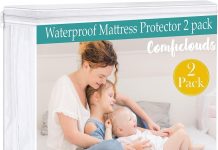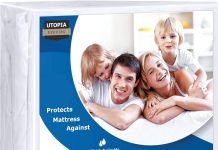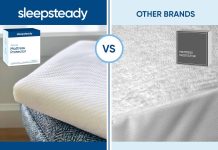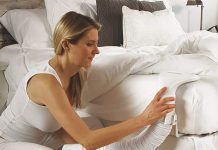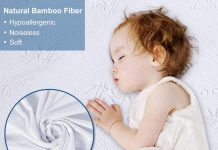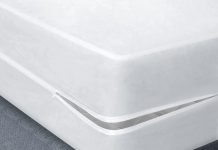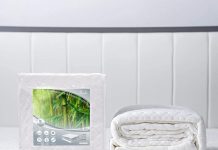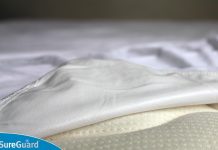If you’re one of the many people who suffer from allergies, you understand the struggle of finding ways to minimize exposure to allergens and create a safe and comfortable environment. One common source of allergens in the bedroom is our cherished mattress, where dust mites and other irritants tend to settle. But what’s the best solution to keep these pesky invaders at bay – encasement or a mattress protector? In this article, we’ll explore the benefits of both options and help you make an educated decision for a restful, allergy-free sleep.
Review contents
Encasement vs Mattress Protector
When it comes to protecting yourself from allergies, it’s essential to consider the type of bedding you use. Both encasements and mattress protectors play a crucial role in safeguarding against allergens, but they have distinct differences that may influence your decision. In this article, we will explore the benefits of encasements and mattress protectors for allergies, as well as the differences between the two options, to help you make an informed choice.
Understanding Allergies
Before diving into the specifics of encasements and mattress protectors, let’s first understand what allergies are and how they can affect our daily lives. Allergies are our body’s immune system overreacting to substances called allergens, which are typically harmless to others. Common allergens include pollen, dust mites, pet dander, mold spores, and even certain foods. When exposed to these allergens, some individuals may experience a range of symptoms that can vary in severity.
Common Allergens
The list of common allergens is extensive, and it is important to be aware of them to better understand the benefits of encasements and mattress protectors. Pollen, often produced by trees, grasses, and flowers, can trigger seasonal allergies. Dust mites, microscopic creatures that thrive in mattresses, pillows, and carpets, are a prevalent allergen. Pet dander, which includes tiny skin cells from animals, can cause allergic reactions in sensitive individuals. Mold spores, found in damp environments, pose a risk to those with mold allergies. Being knowledgeable about these allergens helps us strategize our defense against them.
Symptoms of Allergies
Allergies can manifest themselves in various ways, and recognizing their symptoms is essential for effective management. Common symptoms include sneezing, runny or stuffy nose, itching or watering eyes, coughing, wheezing, shortness of breath, skin rashes, and digestive issues. These symptoms can disrupt our daily activities, affect our sleep quality, and overall well-being. By understanding the symptoms, we can take the appropriate steps to minimize allergen exposure and find relief.
Differences Between Encasements and Mattress Protectors
Now that we have a good understanding of allergies and common allergens, let’s explore the differences between encasements and mattress protectors. Both products serve as barriers between you and allergens, but they do so in distinct ways.
Encasements
Encasements are specialized covers that provide comprehensive protection for your mattress. They completely envelop the mattress, enclosing it from all sides, including the top, bottom, and sides. Typically made of hypoallergenic materials, encasements create a physical barrier that prevents allergens from entering or exiting the mattress.
Mattress Protectors
On the other hand, mattress protectors are thinner covers designed to shield primarily the top surface of the mattress. They are often made of breathable materials that offer protection against allergens while allowing air to circulate through the mattress. Mattress protectors are generally easier to install and remove compared to encasements.
Benefits of Encasements for Allergies
Now that we know the basics of encasements and mattress protectors, let’s delve into the benefits of encasements specifically for allergies.
Total Allergen Protection
One of the most significant advantages of using encasements is their ability to provide total allergen protection. By completely encasing your mattress, encasements leave no room for allergens to penetrate or escape. This level of protection can be especially beneficial for individuals with severe allergies or asthma, as it minimizes exposure to allergens during sleep.
Preventing Allergen Buildup
Another advantage of encasements is their ability to prevent allergen buildup within the mattress. Over time, mattresses can accumulate dust mites, pet dander, and other allergens. By sealing the mattress with an encasement, you create a barrier that prevents allergens from settling deep inside the mattress, making regular cleaning and maintenance easier.
Maintaining Cleanliness
Encasements also help in maintaining cleanliness by protecting the mattress from spills, stains, and dust. They are typically waterproof or water-resistant, guarding against liquid damage. Additionally, encasements are often machine washable, allowing for easy cleaning and removal of any trapped allergens.
Benefits of Mattress Protectors for Allergies
While encasements offer comprehensive protection, mattress protectors also bring a range of benefits for those with allergies.
Limited Allergen Protection
While encasements provide total protection, mattress protectors offer limited allergen protection by covering only the top surface of the mattress. This level of protection can be sufficient for individuals with mild allergies or those who have already taken steps to reduce allergens in their environments.
Enhanced Breathability
Mattress protectors are typically made of breathable materials, allowing air to circulate through the mattress. This feature can be advantageous for individuals who tend to sleep hot or experience night sweats. The enhanced breathability of mattress protectors helps regulate body temperature and improve sleep comfort.
Ease of Use and Washing
Compared to encasements, mattress protectors are often easier to install and remove, making them more user-friendly. They are typically designed with elasticized or fitted corners, ensuring a snug fit on the mattress. Additionally, mattress protectors are usually machine washable, allowing for convenient cleaning and maintenance.
Factors to Consider
When deciding between encasements and mattress protectors for allergies, several factors come into play. It’s important to consider the severity of your allergies, your budget, any additional features you may want, and personal preferences.
Severity of Allergies
Individuals with severe allergies or asthma may benefit more from the comprehensive protection of encasements. However, if your allergies are milder or well-managed, a mattress protector may offer sufficient protection.
Budget
While both encasements and mattress protectors are available at various price points, encasements often tend to be more expensive due to their full coverage and additional features. Consider your budget and choose accordingly.
Additional Features
Some encasements and mattress protectors come with additional features such as antimicrobial treatment, bed bug resistance, or noise reduction. These features may be appealing depending on your specific needs. Be sure to read product descriptions carefully to find the right fit for you.
Personal Preferences
Ultimately, personal preferences play a significant role in the decision-making process. Consider factors like comfort, ease of use, and aesthetics when choosing between encasements and mattress protectors. It’s important to find a product that not only protects against allergens but also enhances your overall sleep experience.
In conclusion, both encasements and mattress protectors offer valuable protection against allergens, but they differ in terms of coverage and additional features. Encasements provide total allergen protection, prevent allergen buildup, and maintain cleanliness. On the other hand, mattress protectors offer limited allergen protection, enhanced breathability, and ease of use and washing. Consider the severity of your allergies, your budget, any additional features you desire, and your personal preferences when making a decision. By selecting the bedding that suits your needs best, you can create a sleep environment that promotes allergy relief and restful nights.



